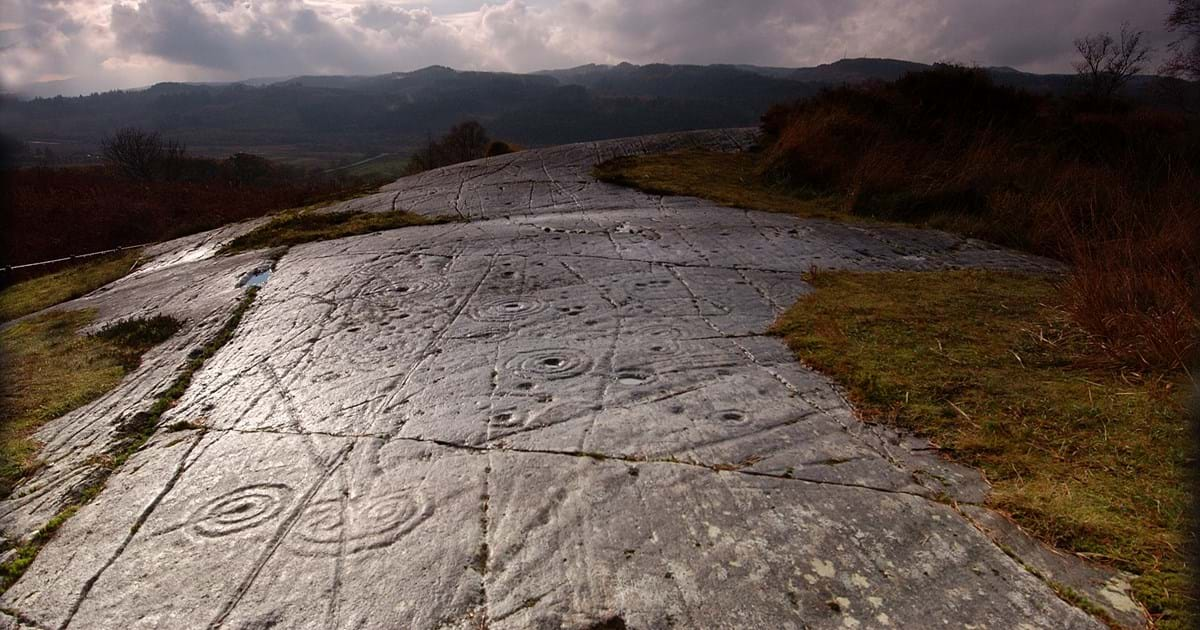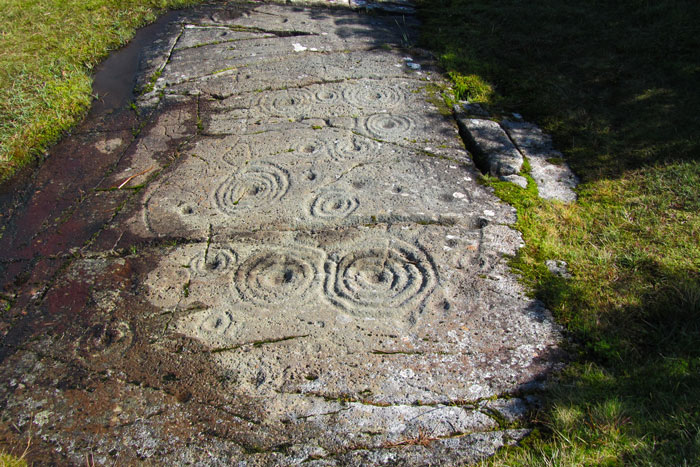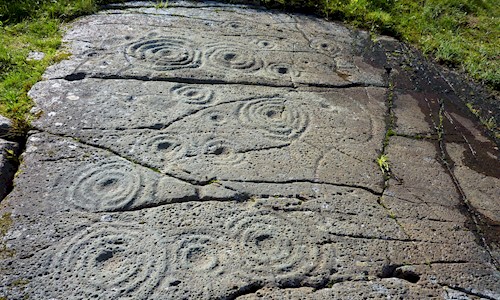The Scottish Spirals

A vast collection of ancient rock art is scattered throughout Scotland. The main motifs are spirals, cup holes, and rings engraved between 6000 and 4000 years ago.
As we often experience, scholars are not sure of the meaning of these rock carvings, so similar even when hundreds of kilometers separate one site from another. A new theory, formulated by analyzing the closest rock art sites to Glasgow, supposes that they served as geographical landmarks, a kind of boundary mark, of the presence of a settlement. However, this doesn’t explain at all why almost every relevant ancient civilization used these exact same symbols.

About 2400 rock carvings have been discovered in Scotland so far, and a large study and census project of prehistoric petroglyphs gathers them under the name of Rock Art of Scotland. Dating back to the Neolithic and early Bronze Age, they are scattered across different regions and the aforementioned project has mapped and organized them in a database.
Many are located in the middle of naturalistic sites, others on the borders of inhabited centers. The greatest concentration is recorded in Argyll and Bute, around the southern coast of Dumfries and Galloway, in Perthshire and Angus.

Among the most emblematic engravings are those of the so-called Cochno Stone, a stone that bears petroglyphs in the shape of a ‘cup and seal’ or circular ring symbols around a hole carved in the shape of a cup. It dates back to the Bronze Age and is a 13 by 8 meter stone, which is located near Faiflay, a suburb of the town of Clydebank. Discovered in the 1960s, it was re-buried for several years to protect it from wear and possible vandalism, only to be unearthed again in 2015.
